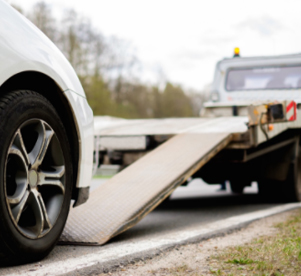Roadside Safety

Tow Operator Roadside Safety Roundtable
An alarming number of tow operators have been struck and killed or injured on the roadside this year. Tow Times contacted sources in the towing industry to create dialogue on how to combat this deadly trend. We thank them for their candid responses, and invite future discussion to develop positive steps and ideas for operator safety.
Work Smart
With lax public awareness and limited police enforcement, towing operators need to take precautions. These cover a range of actions to keep the threat level to a minimum.
“Enter and exit the truck on the passenger side; when exiting the truck, don’t walk toward traffic; use the controls away from traffic,” says Jeffrey Godwin, public relations committee chairman of the Towing and Recovery Association of America and president of FTI Groups Inc. “Spend minimal time in traffic.”
“The biggest thing is exposure,” echos Stanley. “Work smart and move on.”
Along with safe truck positioning, personal protection equipment and proper ANSI high-visibility clothing, Stanley suggests deploying traffic cones, which can only alert motorists but tow operators as well. Operators in his training classes have indicated they place cones on the road shoulder to show motorists it is a work area, and to serve as a possible warning device to a towing operator. If they have their backs turned and hear cones being hit, this may give operators time to move out of the way of an oncoming vehicle,” Stanley says. “I recommend multiple cones spaced every 10 feet for every 10 miles per hour. But one cone will do, even in parking lots.”
“Towing operators need to ramp up advanced warning,” Sullivan says, though he acknowledges that at incident scenes there is limited time and manpower in the early stages. “In the first 10 minutes of an incident, everyone has their hands full — law enforcement, fire departments and tow operators.” But when time and manpower permit, advanced warning signage could add a level of protection.
High-visibility gear can serve the same purpose not only for the operator but for the tow truck as well. Sullivan suggests tow operators borrow a tactic of fire departments and state DOT agencies — adding warning chevrons to the rear of tow trucks. He recommends mimicking the design used by fire services. “The pattern the fire service uses is best — lime green, red, orange,” Sullivan says. But whatever colors are used, the most important feature is the pattern should be both fluorescent and reflective.
Breakdown Protection
Naturally, some roadside locations are more dangerous than others, and call for extra precautions.
“Our operators are struck and killed not at accident scenes, but at breakdowns where we have no protection,” Baker says. “The most dangerous incident for our industry is the motorist broken down on the side of the road. Fire departments and police can block roads. We don’t have that luxury. We respond with one tow operator. Then it’s up to our training. Get yourself on the passenger side. Be conscious of what equipment on the truck needs to go on the passenger side. Don’t assume everyone sees you. Don’t get complacent and think you’re not going to be hit.”
Vehicle breakdowns sometimes involve tire changes, a particularly dangerous task.
“Don’t do tire changes in traffic.” Godwin says, a suggestion that is seconded by WreckMaster’s Justin Cruse. “Operator safety is No. 1. We’re 100 percent behind the Tow First campaign (http://www.thenata.com/towfirst.html.). As an industry, we should adopt that policy.” Cruse is president of WreckMaster and has been involved in the development and presentation of the WreckMaster training program since 1997. WreckMaster has trained over 40,000 towing and recovery operators since 1991.
When it comes to actions on scene, Cruse sums it up: “Can’t do it safely? Don’t do it.”
Be Bright, Be Seen
When towing operators are on the roadside, they need to be seen. That’s where lighting comes in. How much and what color can be a controversial topic.
“We’re big advocates for being seen,” Stanley says. “Lights make motorists aware of you. Too much lighting can be a distraction, but with no lights they can’t see you and the operator becomes more susceptible to being hit.”
It is generally agreed upon that for oncoming motorists, lighting should have the proper mix of intensity and direction.
“New LED warning lights can be too bright, too intense,” Sullivan says. “Emergency lighting companies now offer features to switch from high to low power.” Be aware that raised flatbeds can shield emergency lights from the motorists’ view, and work lights aimed toward the oncoming traffic can look like headlights headed in motorists’ direction, he notes.
